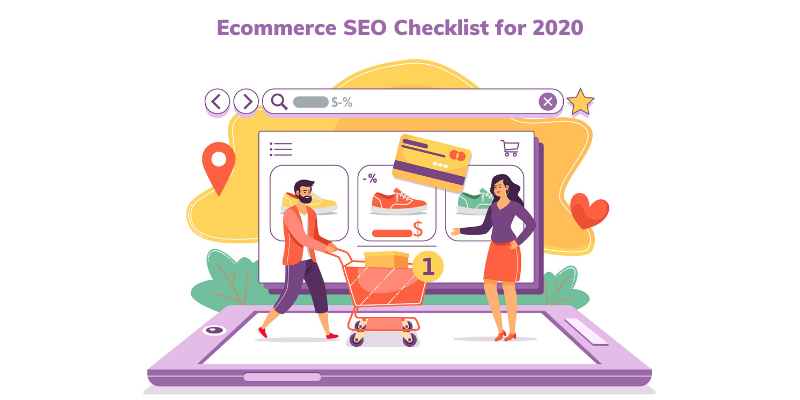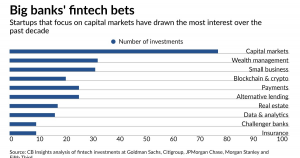Introduction
Today’s world gives importance to one thing the most; accessibility. And what is more accessible than an Ecommerce website? One-click and the shoes you’ve wanted for a whole month are now at your footstep! To grow your e-commerce website, you need to be alert about the recent digital marketing techniques. That’s why we bring you this complete guide of the latest SEO checklist for E-commerce.
This checklist will make it easy for you to move in the right direction regarding proper SEO techniques.

Keyword Research Is the First Step
If you’re a small business trying to get in the same lane as some of the most successful e-commerce websites, you should know that you probably won’t get a ranking for terms like “women’s luxury bags” or “buy Apple watch.” These are the most used keywords out there, and you might not have the budget for them. They are called Head Terms, and they’re able to drive a significant amount of traffic, but only if you have the assets for them.
On the other hand, if your website is focused on one particular niche, then you may able to attain a place in the ranking system. Let’s assume you sell make-up brushes, and you use terms like “Bobbi Brown Makeup brushes” and “Wet n Wild Makeup Brushes,” you might be able to get a ranking for these head terms. The more concise you are with your product, the more chances you have to make use of head terms.
It’s better to keep your main head terms on primary pages such as the Home page, About us, etc. moving on to primary pages, you should avert your focus to long-tail keywords. For one thing, long tails are much less competitive and are more effective than short-tail phrases.
You can use Amazon’s search suggestions for keyword research; after all, it is the world’s biggest online retailer. Other than that, you can search for keywords using a keyword tool such as Google Keyword Planner.
Keep Those Meta Descriptions Eye-catching
After searching for the desired product, the first thing your potential customer looks at is the meta description. And because we’re focusing more on how the customer thinks rather than what Google wants, we keep those meta descriptions fresh and juicy. They do not play a role in the ranking of your page…BUT it’s important to still make them interesting as it’s essentially the advertisement for your website.
A meta description should include keywords that are in your page title to get the maximum click-through rate. Make it unique, so when your potential customers scroll through their search results, they click on yours!
Site Building
Although the make-up of your website is a technical matter, it still needs some thought as it’s one of the most critical updated ranking factors. Your content should be easy to get to, meaning that your product page should be a few clicks away only, especially in our generation, when mobile phones are more relevant than ever.
Everyone knows categorizing your pages efficiently is the best way to make your website easy to use. It also makes it easy to manage your inventory and allows you to make use of all the e-commerce SEO benefits there are. Try to make your structure like this:
Home page > Make-up Brushes > Bobby Brown brushes > Eyeliner brushes
Your customer’s journey from point A to B should resemble more of a straight line than a rollercoaster track.
Add Some Interesting Pictures
If you’re selling a product, you must show its relevant images to make your website more optimized. It may seem like product pictures are more of a last-minute task – especially from a content writer – there are still some things you have to supervise.
- Image Size: Images that are too big can slow down the speed of your site, which is directly linked to your SEO. You can either adjust the tile size accordingly or use a plugin to compress images.
- Name of Your File and Alt Tags: using a file name saturated with keywords will make file management a lot easier. And fro alt tags, do the same. That’s because search engines can’t read images and need some sort of description to tell them what the image is. Consequently, this will contribute to how a page is indexed and ranked. Your alt tags can be seen by going to the “view page source” option in your browser.
Page Loading Speed Should Be Lightning- Quick
The page load time is the performance of your site that is directly connected to the user’s engagement. Google focuses on giving the user’s the best experience, so it values sites with fast-loading pages. It announced an update that focuses on the mobile page speed in 2018, and ever since then, it penalizes those sites that don’t load fast enough on mobile devices. Using Google’s mobile testing tool, you can find out the speed of your page. It should be no more than 1.9 seconds as it is the average most of the top-ranking sites
The Power of Internal Linking
The two primary purposes of internal linking are boosting your e-commerce SEO by showing how pages are related to one another. The second is increasing the time users spend on your site by encouraging them to browse and explore.
Keywords in URLs
To improve your visibility organically, try using keywords in your URLs, especially for category and subcategory pages. For example, your URL should look something like this:
www.example.com/makeup/brushes/high-quality-Sephora-brush-set
When you look at that URL, you can see how organized it is and easy to decipher. Google also likes this and makes crawling and indexing your site easier and more often.
NB: Keep your URLs straight forward and as short as possible because a recent analysis of 1 million Google search results shows that short URLs rank the best.
Finally, It seems like a lot of work, but once you get the hang of optimizing your website, you’ll start to see immediate results. An e-commerce site without SEO is like a pair of dull scissors; it will work, but neither efficiently nor quickly. Here’s a summary of the latest SEO checklist
- Make use of the right keywords
- Write unique Meta descriptions
- Keep your site simple, user-friendly and mobile-friendly
- Optimize even your pictures
- Your website must be FAST
- Internal linking is a key factor
- Well written URLs are your best friend
Conclusion
Follow these steps, and you’ll start to see results in no time. Remember to make the user experience the best because, as we mentioned before, accessibility is what it’s about. If your user doesn’t like your site, then your hard work will be fruitless.
Digital & Social Articles on Business 2 Community
(81)
Report Post





